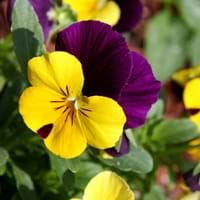Color
Blue, Orange, Pink, Purple, Red, White, Yellow
Pink, White, Yellow
Color Meaning
Blue - Peace and Serenity, Orange - Satisfaction and Passion, Pink - Sensitivity and Love, Purple - Elegance and Pride, Red - Courage, Desire and Love, White - Purity and Innocence, Yellow - Happiness and Friendship
Pink - Sensitivity and Love, White - Purity and Innocence, Yellow - Happiness and Friendship
Fragrance
Floral
Aromatic
Line
Not Available
Not Available
Silhouette
Not Available
Not Available
Blossom Texture
Not Available
Not Available
Form
Not Available
Not Available
Sunlight
Full Sun
Full Sun
Watering
Diligently
Enough
Type of Soil
Well-drained
Well-drained, Sandy
Essential Fertilizers
Lime stone
Lime stone, Nitrogen
Common Pests and Diseases
List of Pests
Aphids, Slugs, Snails, Spider Mites
Aphids, Mites, Thrips
List of Diseases
Bacterial leaf spot or blast, blight, Crown gall rot, Gray Molds, Root Rot
Nematodes, Stem Rot
Bloom Time
All Summer Season, Fall Season, Spring Season, Winter Season
Late-Summer Season, Mid-Summer Season
Origin
Asia, Europe
Mexico
Interesting Facts of
- The flower name Pansy has come from French word 'pensee' and that means thought or remembrance.
- The flower resembles to human face.
- Tuberose flower blooms only at night and it is the only time when it is active. Due to this these are also called as “Night Queen”, “Mistress of the Night”, or “Raat ki Raani” in Hindi.
- In Hawaiian weddings, it is a tradition for the bride to wear a Tuberose wreath.
.
Lifespan
Biennials - completes its life cycle in two years
Perennials - a plant that lives for three or more years
Flower Meaning
Not Available
Astrological Flower
Not Available
Birth Month Flower
Not Available
Flower Availability
Not Available
Uses
Not Available
Not Available
Health Benefits
Best remedy for Cough & Cold, Good for liver and gallbladder, improves the functioning of the lungs, kidneys, and stomach, Used for sinus pain, hay fever and headache
Good remedy for Diarrhea, Prevents Intestinal Ulcers
Medicinal Uses
Acts as an anti-inflammatory, It has anti-bacterial and anti-fungal properties, It has anti-septic properties
Acts as a antidepressant, Acts as a antispasmodic, Acts as an anti-inflammatory
Culinary Uses
Included in wines and cocktails, Used as flavor food in deserts and ice creams, Used in salads, soups and sandwiches
Used in salads, soups and sandwiches
Design Uses
Not Available
Cosmetic Uses
Best for Dry sensitive skin, Best for Healing, Softens skin, Used in Perfumes
Used in Perfumes, Utilized in making essential oils
Occasional Uses
Anniversary, Decoration
Decoration, Wedding
Common Name
Not Available
Scientific Name
Viola tricolor subsp. tricolor
Polianthes tuberosa
Sub kingdom
Tracheobionta
Tracheobionta
Super Division
Spermatophyte
Spermatophyte
Division
Magnoliophyta
Magnoliophyta
Order
Violales
Asparagales
Class
Magnoliopsida
Magnoliopsida
Family
Violaceae
Asparagaceae
Genus
Not Available
Not Available
Number of Species
Not Available
Not Available
More about Pansy and Tuberose Facts and color
You must be curious to know more about Pansy and Tuberose facts and color. flowers.comparespecies.com will let you know all the Interesting Facts about Pansy and Tuberose. Pansy comes in Blue, Orange, Pink, Purple, Red, White, Yellow colors whereas Tuberose flowers are with Pink, White, Yellow colors. Other Pansy and Tuberose facts will definitely amuse you.
Pansy and Tuberose growing conditions
Absolute growing condition is the only key to keep plants in good health and in good shape. Let’s learn about essential Pansy and Tuberose growing conditions. Pansy requires Full Sun and Diligently watering with 5.40 of Well-drained soil. Tuberose needs Full Sun and Enough watering with 6.50 of Well-drained, Sandy soil. Get other Pansy and Tuberose facts in the sections below.
Pansy and Tuberose Facts
Want to know about Pansy and Tuberose facts? Get all the Pansy and Tuberose facts here.
Pansy and Tuberose Classification
After knowing about various Pansy and Tuberose facts, let's study their classification. Based on genetic and physical features, Pansy and Tuberose classification starts with knowing their scientific name. The scientific name of Pansy and Tuberose is Viola tricolor subsp. tricolor and Polianthes tuberosa respectively. Pansy belongs to Violaceae family whereas Tuberose falls under Asparagaceae family. Also check out Flowers by Color so as to plant colorful aroma in the garden.





